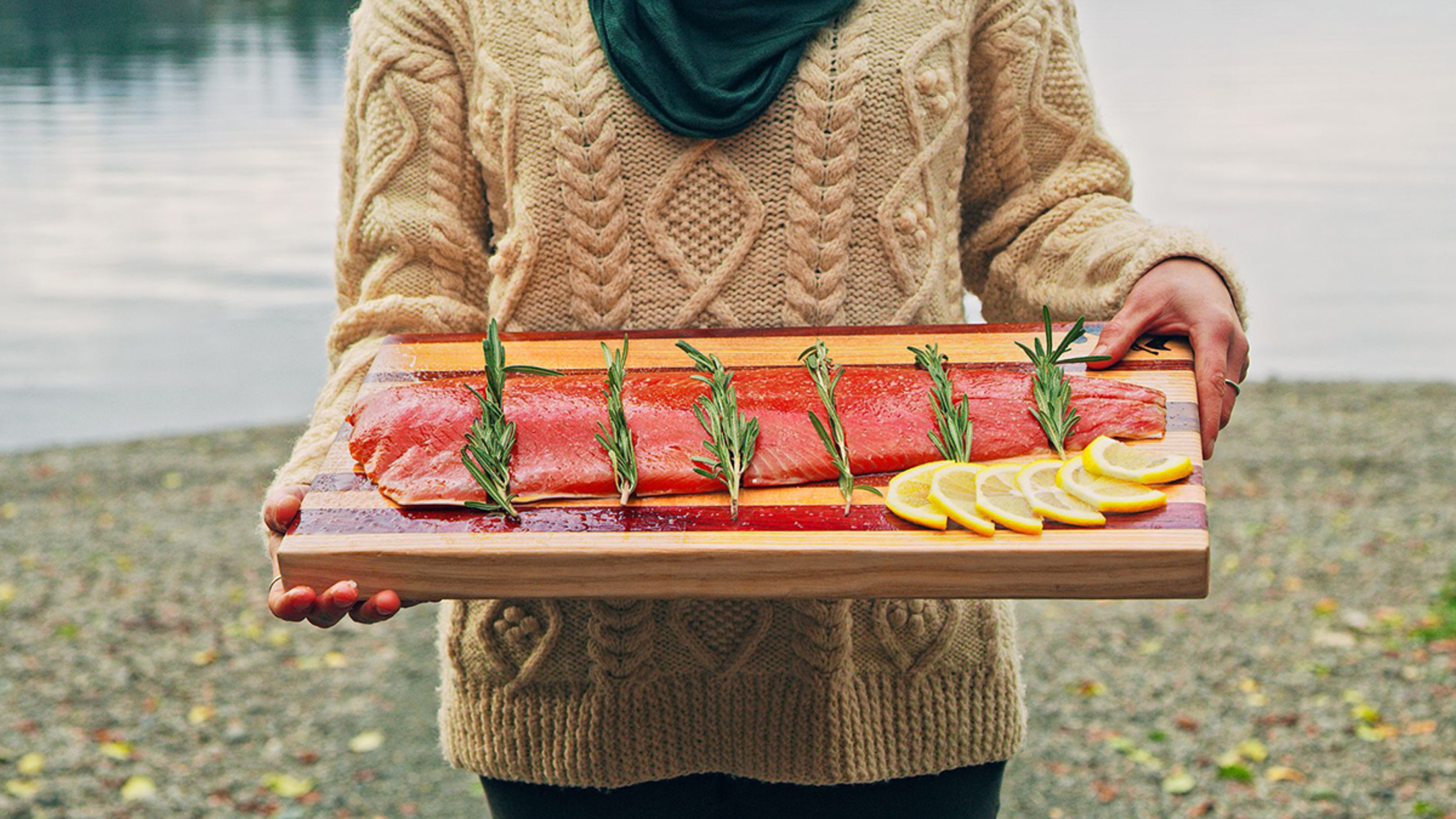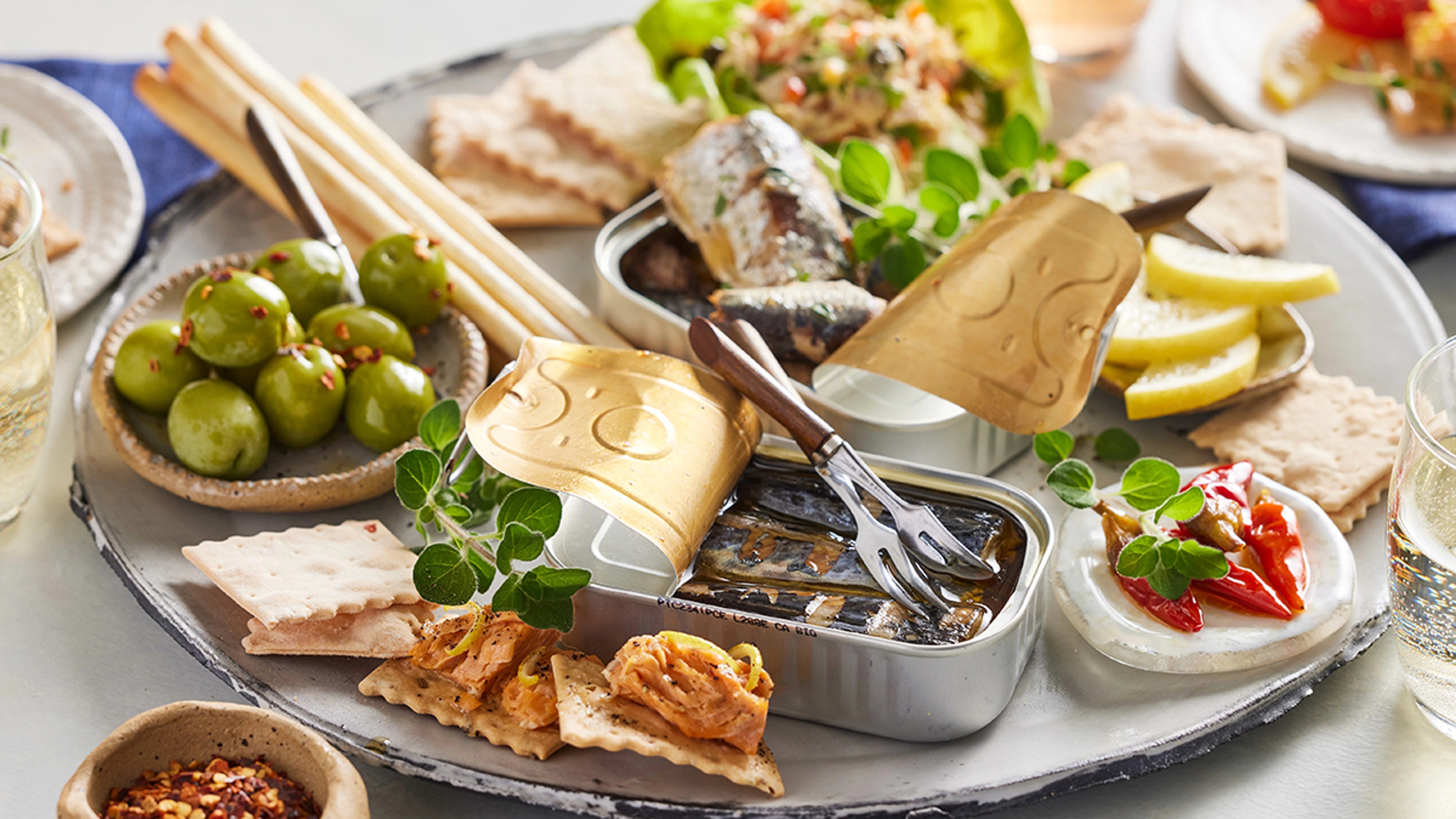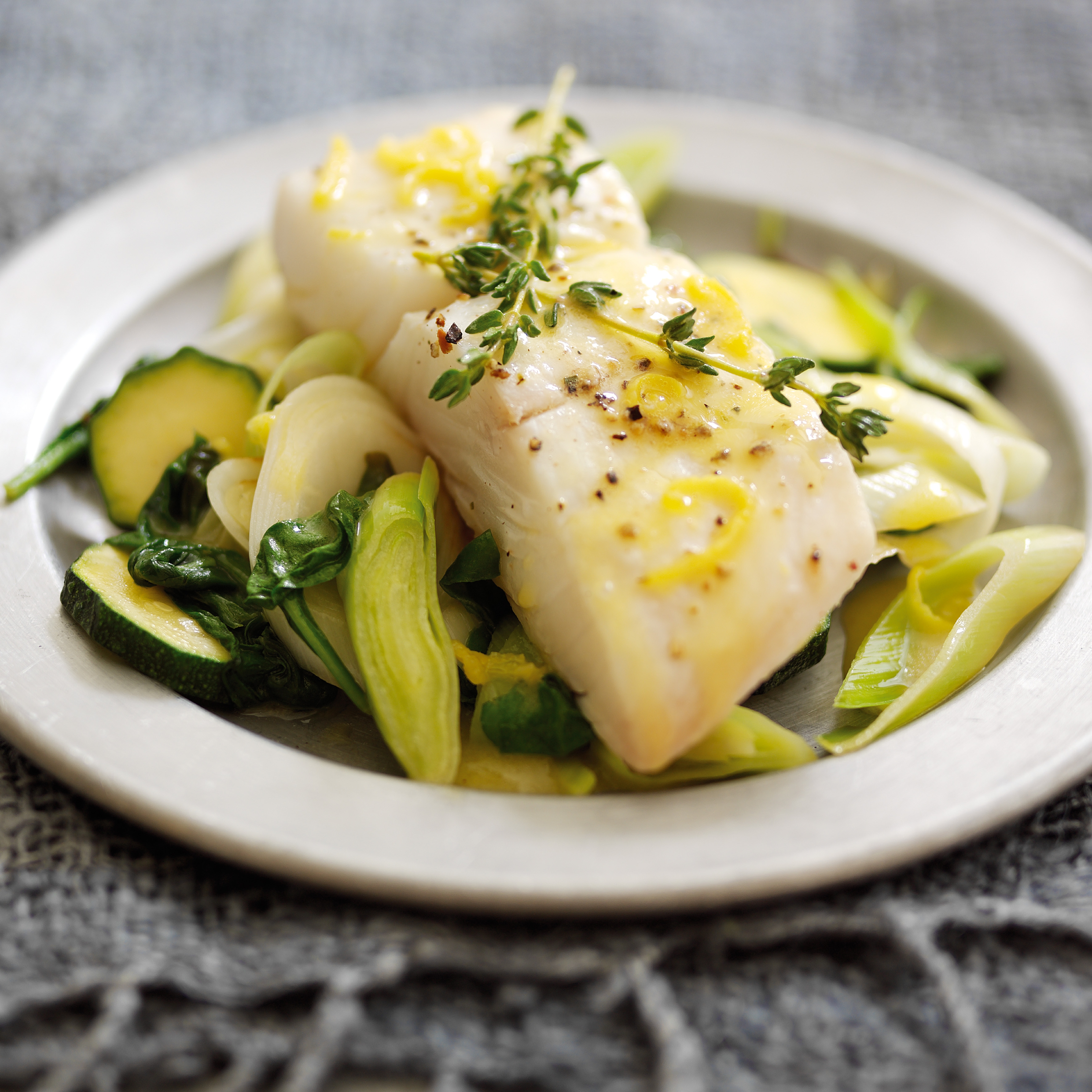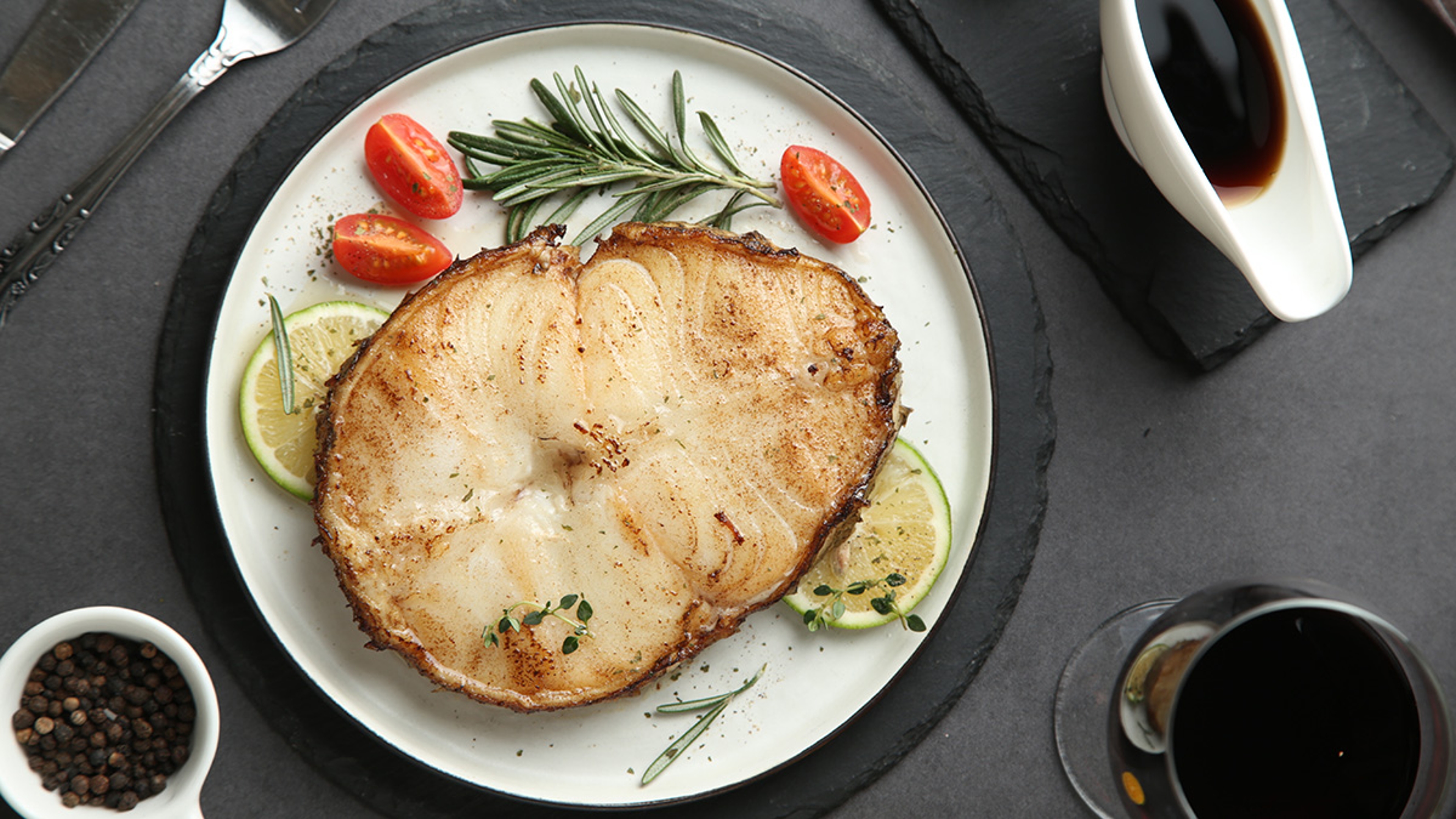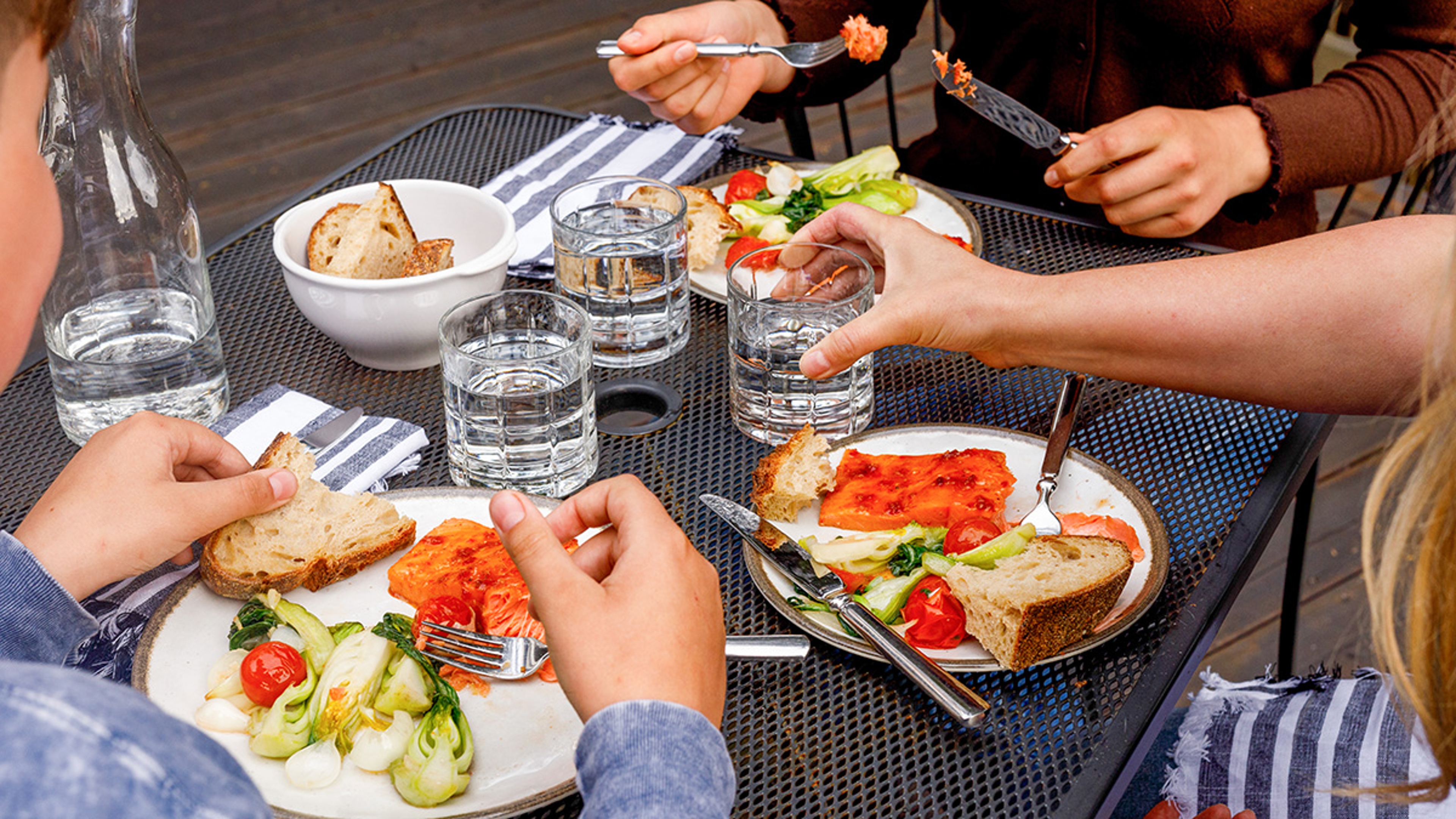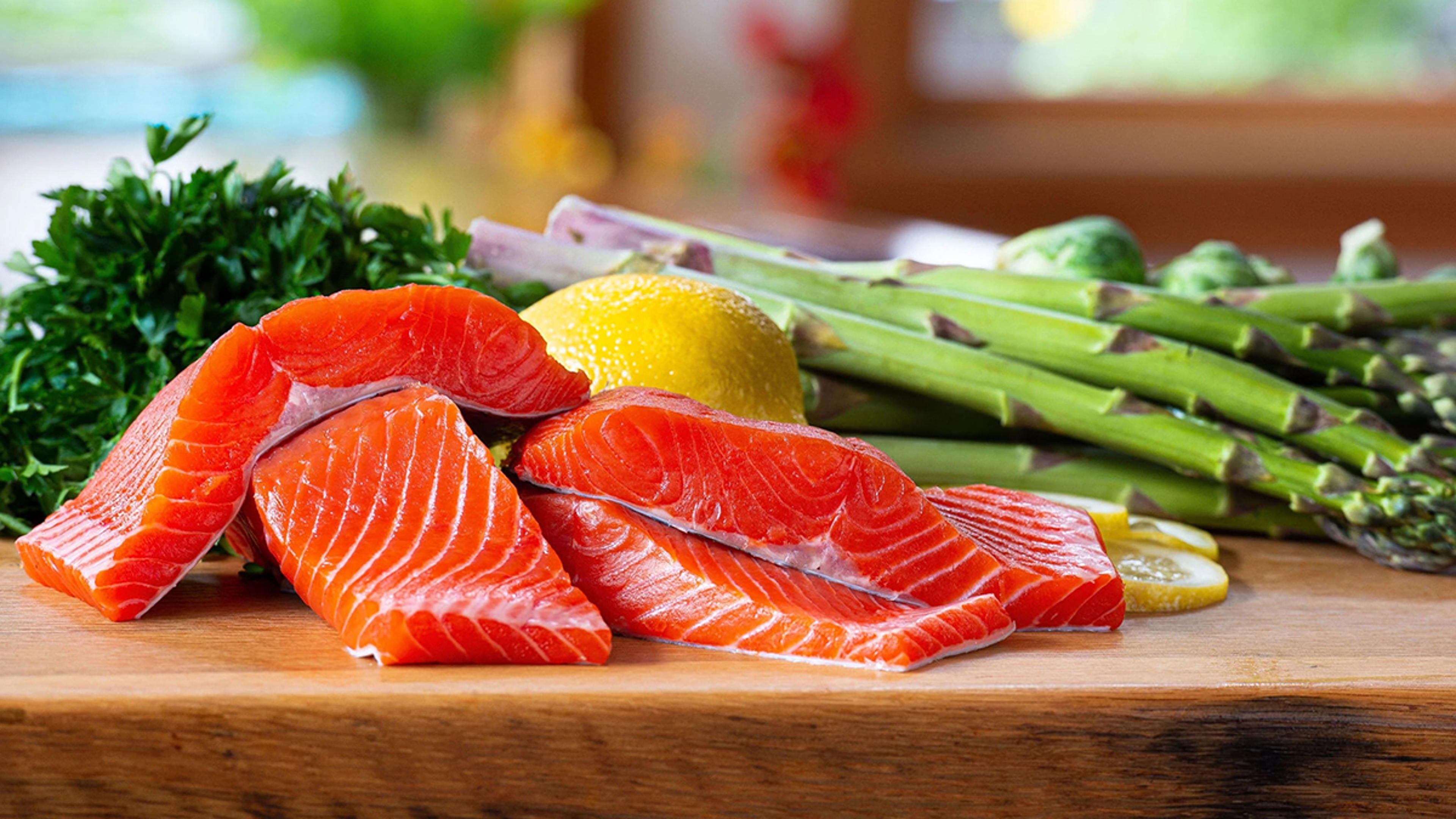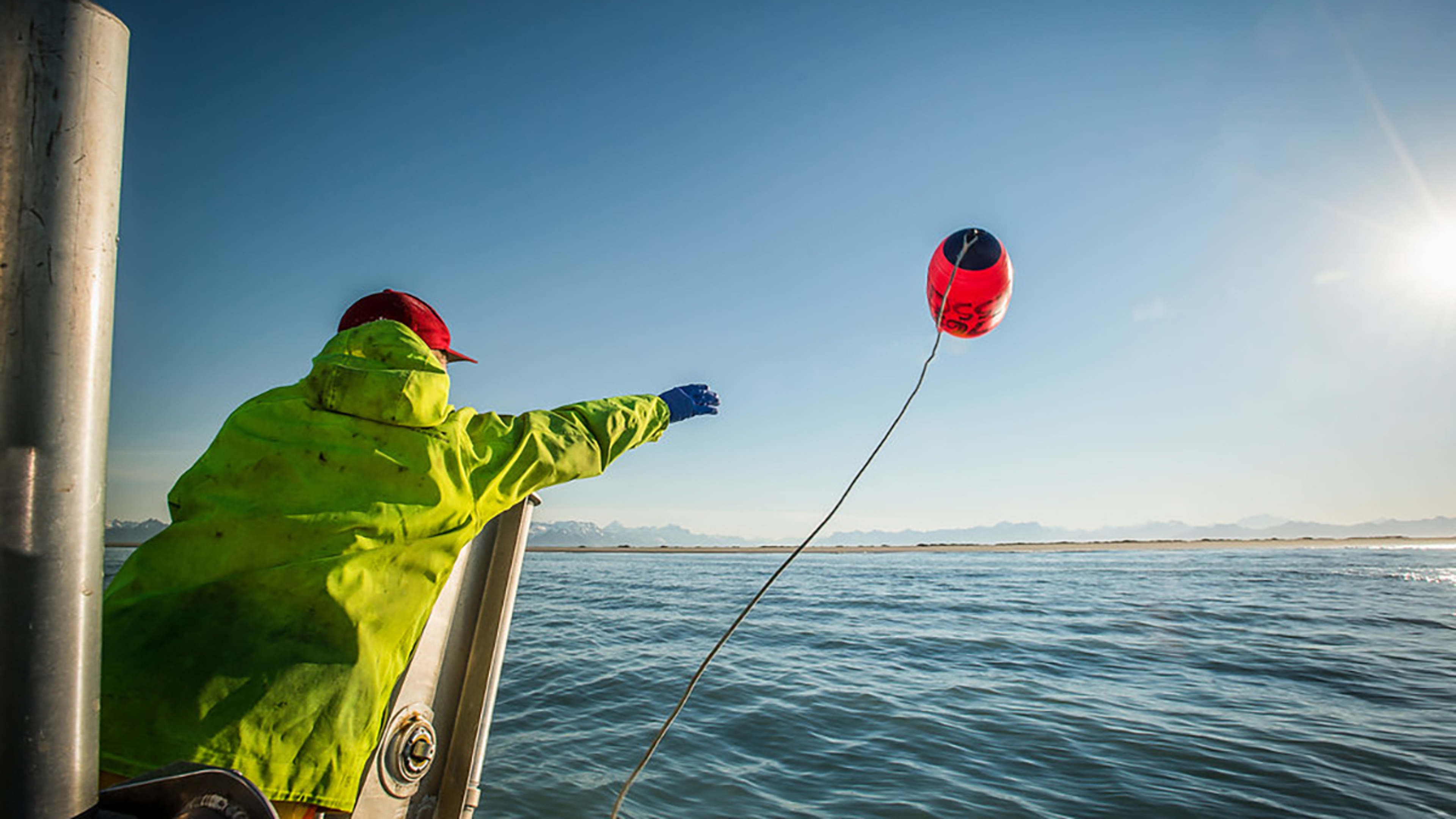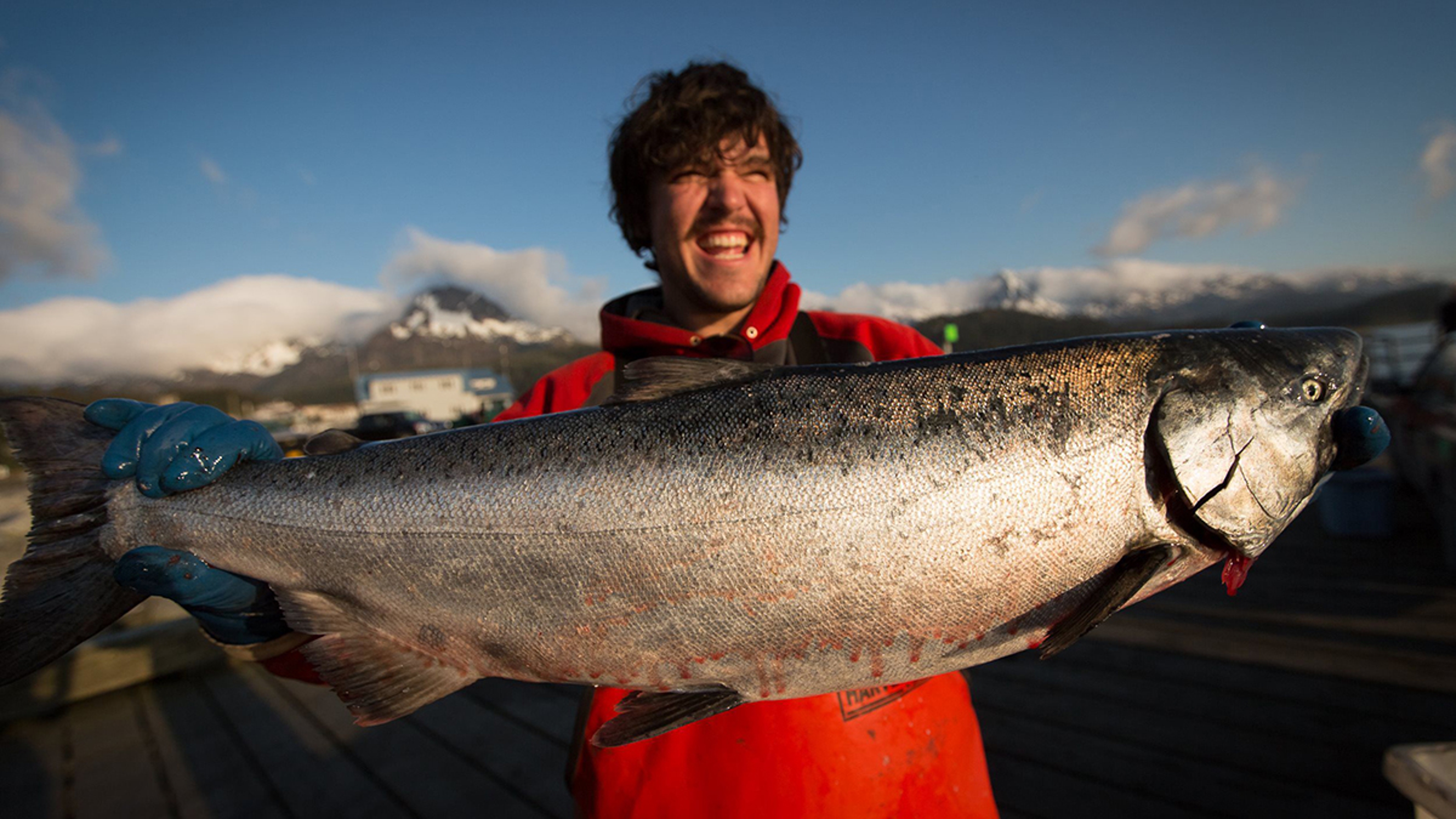June’s Featured Catch: Copper River Sockeye Salmon
Move over king, there’s a new favorite seafood from pristine Alaskan waters.
May 22, 2025
When you think of Alaska’s Copper River, the fish that may first come to mind is its namesake king salmon. If you blink it will be sold out. But it’s not the only high-quality wild-caught fish in the sea, or river. Say hello to Copper River sockeye salmon, one of the most nutritious proteins anywhere.
Copper River sockeye salmon is a flavorful, easy-to-cook seafood main that you can feel good about eating. Sometimes called red salmon, sockeye gain their brilliant color from a natural diet of krill and plankton which possess a carotenoid pigment called astaxanthin. This powerful compound not only provides a deep color and delicious flavor, but also is an antioxidant, and may help prevent cancer, promotes skin and heart health, and can alleviate joint pain.
According to the Alaska Department of Fish and Game, the world’s largest harvest of sockeye salmon is in Alaska’s Bristol Bay. The sockeye from the Copper River is perhaps even more spectacular.
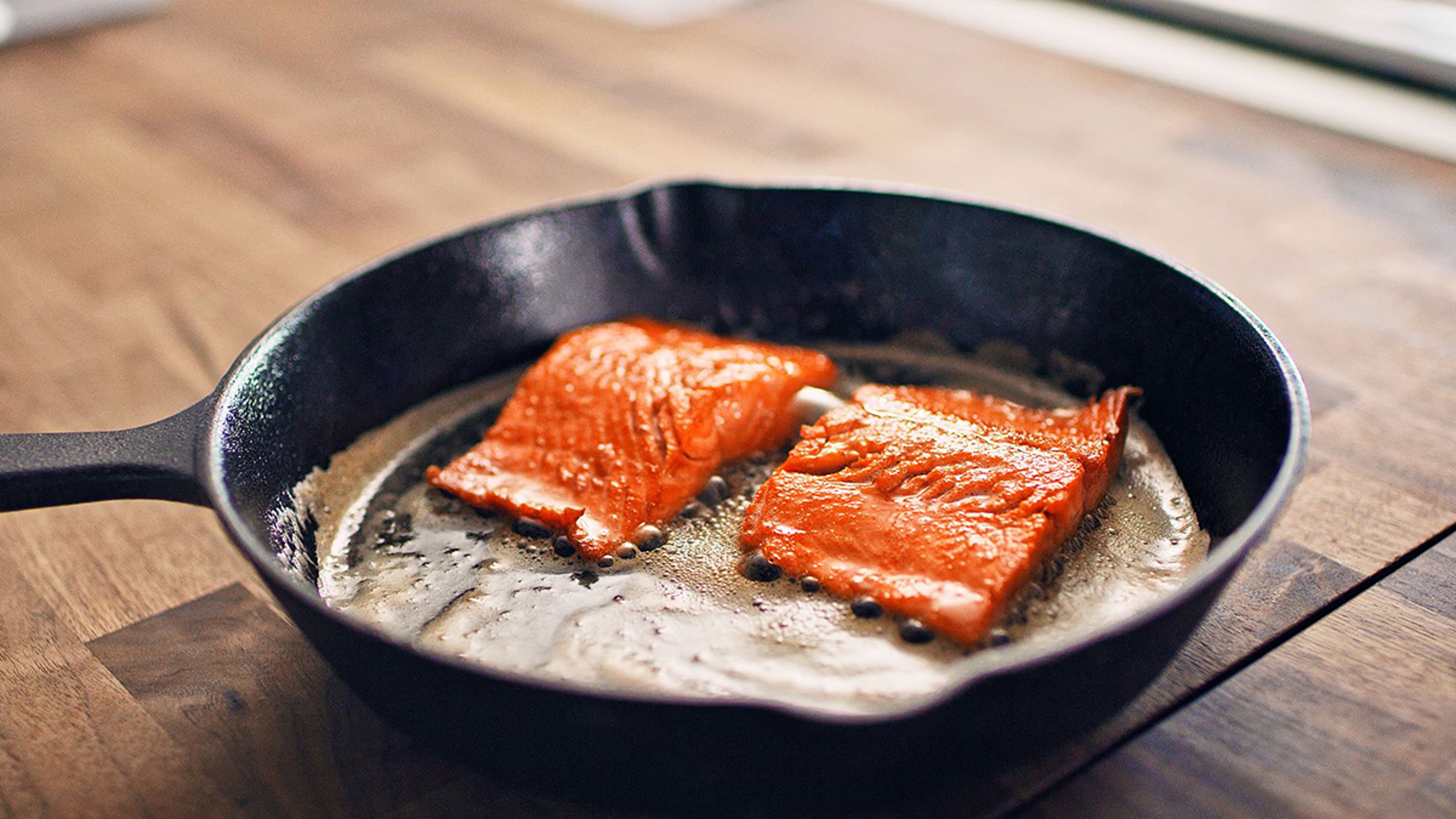
Reeled in by Copper River Seafoods, a company founded on principles of sustainable, artisanal fishing with a network of 100-plus small-boat fishermen, Copper River sockeye is one of the best-tasting sea-to-table foods.
Cassandra Squibb, an Anchorage, Alaska-based marketing executive who has worked with Copper River Seafoods for over a decade, says that sockeye is a go-to fish for native Alaskans like herself. Vital Choice’s move to carry Copper River sockeye is exciting for salmon loyalists “who are ready to get their hands on the GOAT sockeye from the Copper River,” she says, using the acronym for “Greatest of All Time.”
READ MORE: Facts About Sockeye Salmon
What’s the difference between sockeye and other types of salmon?
There are five well-known types of salmon from Pacific waters. The Alaska Department of Fish and Game, which manages the fisheries to ensure that there is a plentiful supply of wild seafood from its waters, lists them as Chinook (king), coho (silver), pink, chum, and sockeye.
Sockeye are often bright red with firm flesh, whereas king and coho are usually a lighter orange color. In the water, sockeye are sleek, with few if any spots, as opposed to the larger king and coho. When spawning, both male and female transform from white-silver to a green head with a striking red body; the males develop a distinctive humpback.
Sockeye is among the most plentiful species of Alaska’s salmon. And there’s an abundance of them in 2025. The forecast for the Copper River sockeye run is 55% above the recent 10-year average.
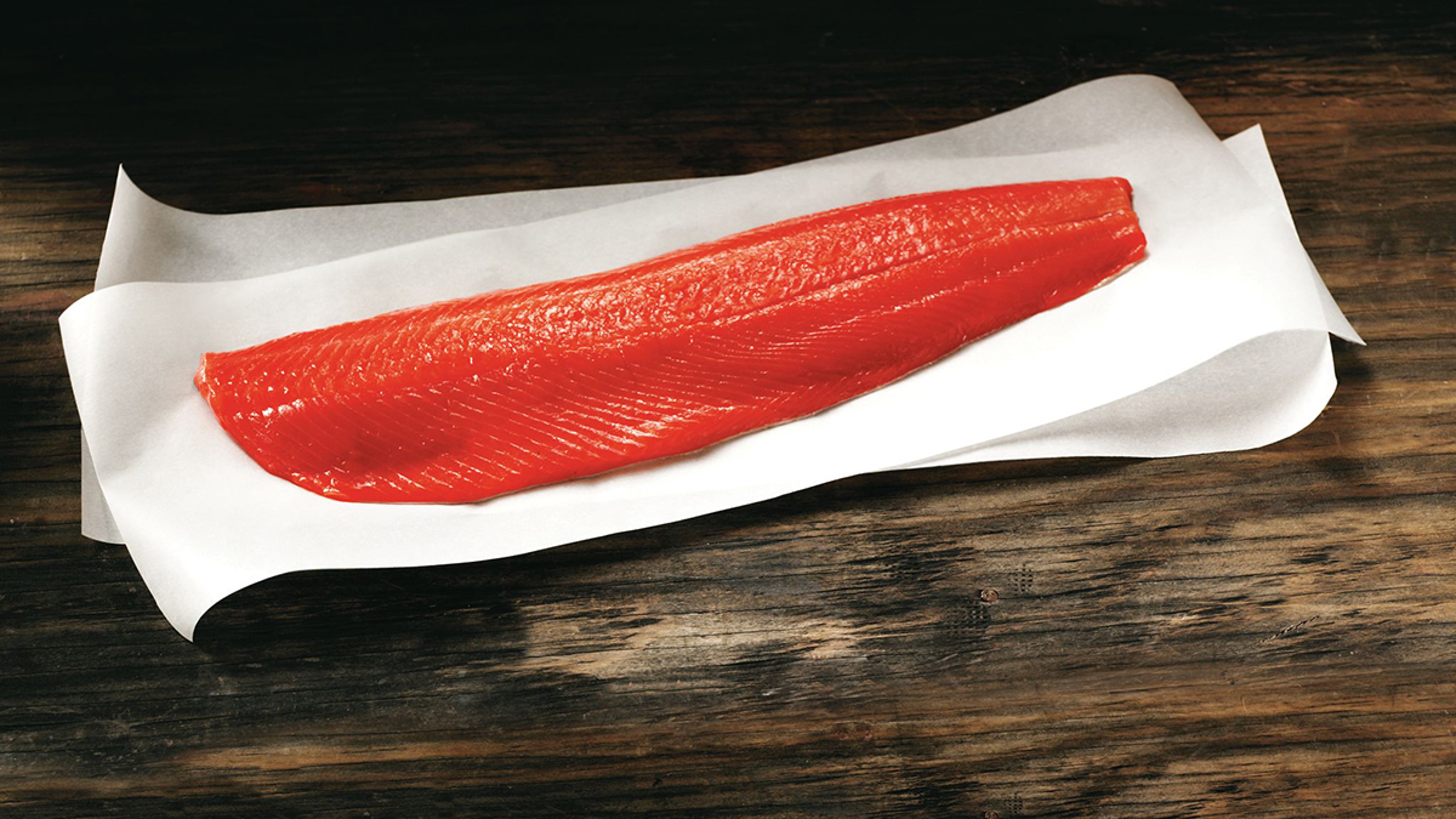
What sets Copper River sockeye apart?
While these sockeye attributes are the same in spawning grounds up and down the Alaska coast, the fish that make the journey through the meandering, 300-mile Copper River have something extra. Copper River Seafoods co-founder Scott Blake says the river’s fast-moving glacial waters make the fish store healthy fats to survive the trip. Sockeye emerge into the Gulf of Alaska to mature; they are harvested just before they return to the river to spawn.
“Fish stop eating when they enter fresh water, so the salmon are at their peak level of fitness when they are commercially harvested,” Blake says. Squibb adds that this means that sockeye are “at their best” when they’re at sea, prior to making the journey to freshwater..
The heartiness of the Copper River sockeye results in an oilier, fattier version of the species, which delivers more omega-3s and essential vitamins — and 36 grams of protein per 6-ounce serving, a whopping 64% of recommended daily protein intake.
How Copper River sockeye get from sea to plate
The Copper River sockeye season runs from mid-May through June and sometimes into mid-July. Copper River Seafoods fishermen tend to operate solo on boats that are only about 28 to 32 feet, known as bowpickers. They get their name because the gillnets, vertical panels of netting used to harvest sockeye, are hung from the bow, or the front of the boat.
Squibb points out that the areas where the freshwater of the Copper River meets the saltwater of the Gulf of Alaska can be tumultuous due to widely fluctuating tides and wind. The effect can be jarring, she says, adding, “The powerful waves in the region have been featured in surf magazines — but it’s cold, wild, and only for the brave in thick wetsuits."
Once harvested, the sockeye are iced onboard the bowpickers and brought to Copper River Seafoods’ facilities in Cordova for processing. The headed and gutted fish are then trucked or ferried to Anchorage for portioning, and the frozen fillets can then be shipped to the Lower 48.
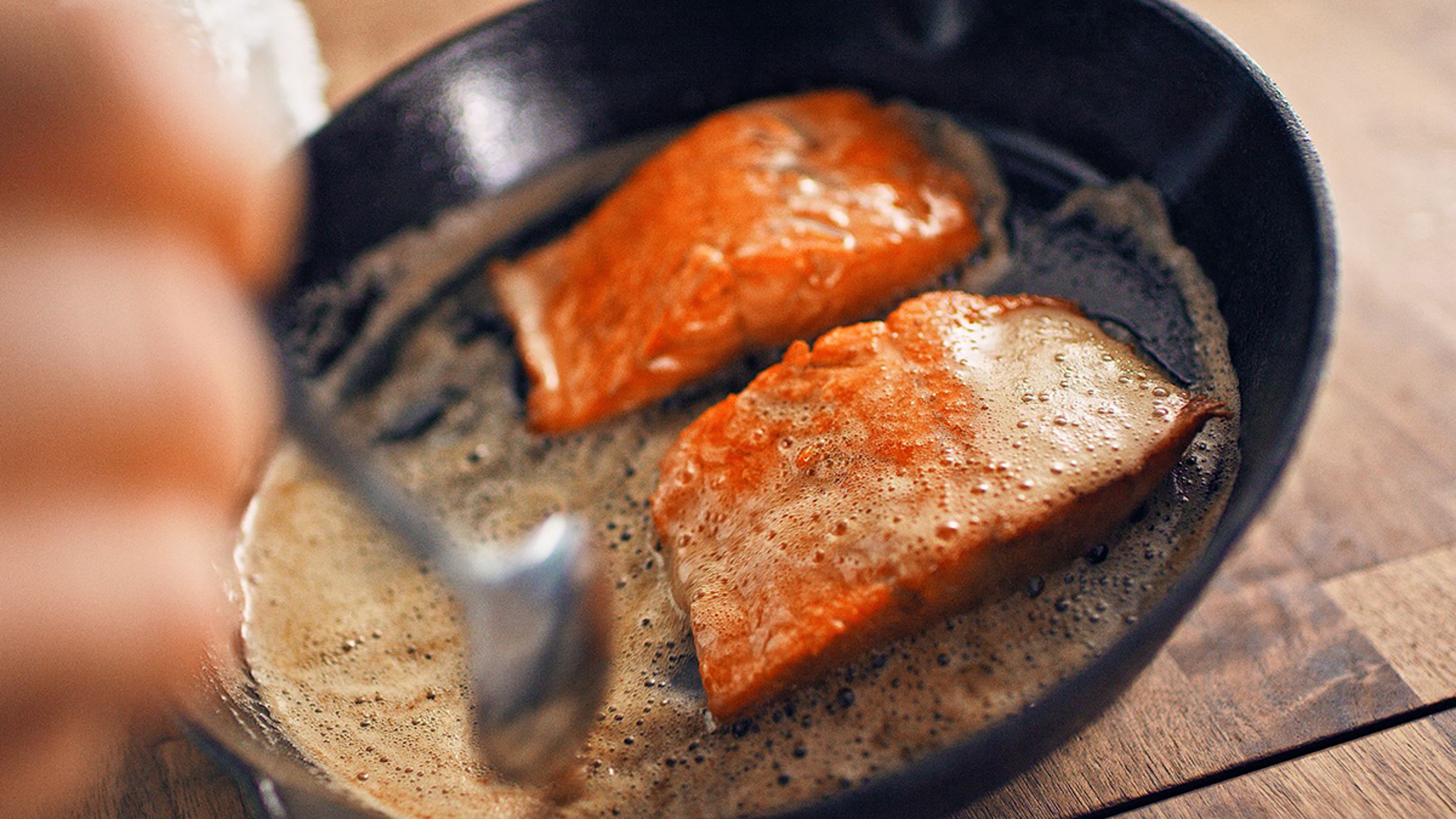
How to cook Copper River sockeye salmon
Besides their striking red coloring, one of the most notable things about Copper River sockeye salmon is how easy it is to handle and cook. A frozen fillet can be defrosted under a stream of cold water and cooked on a grill, in the oven, or a sauté pan, or under a broiler, all in under 20 minutes!
MAKE THIS: Lemon Caper Copper River Salmon
Blake and Squibb muse about how little work is involved in preparing the fish, saying that sockeye do not require much adornment, merely salt and pepper, and maybe a squeeze of lemon. The fish’s rich flavor also invites light sauces, especially made with fresh herbs and mustard.
In Alaska, the general rule is simple is best. Squibb points out that the sockeye is so popular that when Copper River Seafoods agreed to provide salmon to the large public school system in Anchorage for Alaskan Wild Salmon Day, the request was for one type of salmon only: sockeye. “We’re total salmon snobs,” she laughs. After one bite of Copper River sockeye, you may be too.

